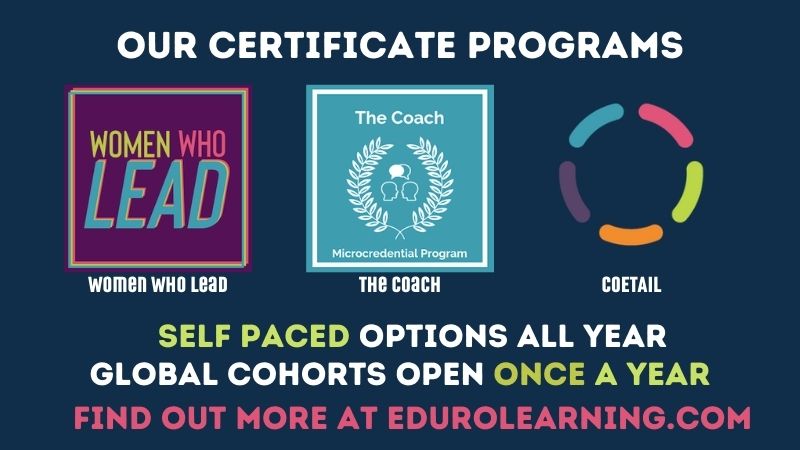We want to give you a peek inside our Coach Certificate & Mentorship Program. Coaches taking part in this academic-year-long journey have graciously given us permission to post some of their learning and reflections from the private coursework they are undertaking during this program. Where possible, we have shared the course and the action task to give context for the guest post.
The Topic: Coaching: From Theory to Practice
The Task (1): Share your thoughts on the process of selecting a colleague to work with, including at least one goal for your work with this colleague over the next six weeks.
If I’m being honest, I dragged my feet on this assignment a lot longer than I needed to. I was anxious about it; I found myself unconsciously delaying this conversation again and again. I’ve worked hard to establish myself as a leader in this role – running workshops, joining committees, voluntarily taking on extra duties – and I was worried that by asking a colleague to have this conversation the perception would be that they were doing something “wrong”. I was really struggling with how to get a teacher on board without sounding like I wanted to go into their class to “fix everything”.
The New Yorker article in this unit gave me some confidence to move forward. I had a few teachers in mind to ask already and I began practicing my sales pitch. “International tennis superstar Rafael Nadal has a coach and he’s pretty awesome. Can I watch you play for a bit?” Sounds reasonable to me. Is someone really going to argue with international tennis superstar Rafael Nadal?
Yes. Someone would. Teacher selection would be key for this, as I didn’t want a John McEnroe on my hands. Plus, this is all the knowledge I have about tennis so I’d have to keep my metaphors short.
As it turns out, I didn’t have to worry about asking at all. Because I had previously pushed myself into a leadership role and had worked hard to be visible (especially during online learning) I had a teacher reach out to me. OK, well, she didn’t exactly “reach out” per se, but during a casual conversation she mentioned that she was having some concerns with her class and asked if I had any ideas to help.
The little robot in my brain began initiating coaching protocols. “You know,” I said, “I’d love to come into your class so I can see what you’re talking about.” She liked the idea and we chatted a bit more about what I would be looking for when I came in to observe.
And just like that, my pre-observation was done. I was dreading asking a teacher to add “one more thing” to their to-do list, but by keeping it casual I was able to alleviate some of the stress for both of us. I jotted down some notes after our conversation and prepared for my visit.
Afterwards, we met again. She was open to my feedback and suggestions. We agreed that a lot of the issues that she was having could be resolved by changing the physical layout of her classroom. Our goal became to optimize the space that she had for student learning and play.
Moving forward, I’ll continue to look for ways to have these coaching conversations organically. My hope is that as these conversations become more and more frequent, I’ll be able to start building a culture of coaching at the school.
The Task (2): Have a conversation with another learning leader at your school about the process of coaching colleagues.
It was extremely helpful to have a conversation about coaching with another leader at my school. We were able to commiserate about the challenges of cultivating change, specifically in regards to shifting a school culture. Sure we griped and complained a little bit, but we were quickly able to shift into a proactive mindset and generate some ideas that would help us move forward. Even though I am technically the only coach in my department, I see the benefit of regular conversations like this. They help to get all of us out of a rut and moving in a positive direction. People feed off each other’s energy and excitement; I’m lucky to work with colleagues where this is reciprocal and balanced. We keep each other in check when things start to go off the rails (OK, I get kept in check when I go off the rails) and lift each other up to reach our goals.
Basically what’s happening here is that we are getting ‘coached’. We are identifying pressure points and generating new and creative solutions.
Read more from The Coach participants as they share their learning from the microcredential program…
Cary’s post: Why Do Schools Need Coaches?
Andre’s post: What Challenges Do Coaches Face?
Sandra’s post: Coaching in Practice
Cary’s post: The Coaching Cycle
Jo’s post: The Coach Approach


Recent Comments